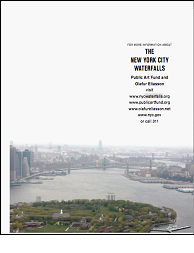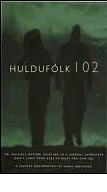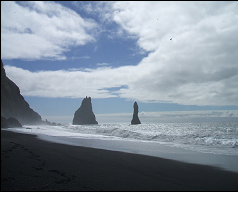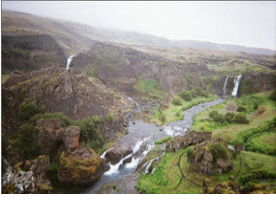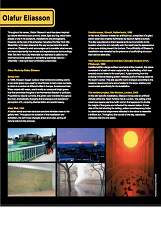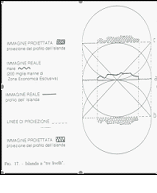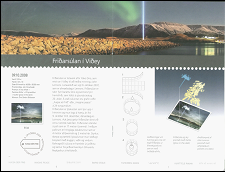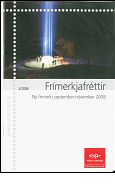In this paper I will try to define a possible way to respond to the increase of violent passions and violent reactions in our societies. It might well work in everyday life, but perhaps mostly at a political level.
In the first part, the focus will be devoted to the idea (and practice) of Galateo, that is kindness or politeness. We will later wonder if and how a new Galateo (etiquette) could be an effective tool for social action, in view of overcoming the current violence of language and political passions.
Our main character, author and source is Melchiorre Gioia. Between the Revolutionary age and the Restoration period, between the 18th and 19th centuries, Melchiorre Gioia, an Italian economist who was at first a Jacobin thinker and would later become a civil servant during the Cisalpine Republic and the Napoleonic Regno d’Italia (Kingdom of Italy), published a first, then a second reviewed edition of his Nuovo Galateo (New Etiquette).
His aim was to spread civil education among the citizens of a democratic nation. Perhaps, the connection between a civil ethics and the developing (or the survival?) of democratic and liberal societies could also be a topic for moral and political philosophy in our contemporary age.
The old Galateo
As is well known, Gioia recalled the older Galateo, the work by Monsignor Giovanni Della Casa (1558), a treatise able to define socially acceptable behaviours in the town milieu during the early modern age.
In the Galateo the advice of the master, un vecchio idiota (an old illiterate man), is addressed in a friendly way to a young man of a very noble family: some critics have said that Della Casa’s audience could only be noble, that is, the courtesan elite of the Renaissance age. But it is precisely Della Casa to affirm that his teachings are valid for all, to arouse la benivolenza di coloro co’ i quali viviamo (the benevolence in those with whom we live; Della Casa 2013 [1558]: 4), a benevolence that is earned by eliminating any ugliness or any nastiness from the body, from speech and behaviour.
It is the space of the city and not the court where the giovanetto (young man), to whom these teachings are directed, must behave cleanly together with the members of the same brigata[1].
For those who live nelle città e tra gli uomini (in cities among other human beings, ibid.: 5) Della Casa offers not simply cleanliness, but a sensitive aesthetic, a set of behaviours that will also be inettie (trifles) compared to great moral values, but which can make life more beautiful. They are virtù o cosa molto a virtù somigliante (virtue or something very similar, ibid.: 3). This applies if we consider the frequency with which “the sweetness of customs and the pleasantness of manners and words” are practiced, “since everyone must many times each day deal with others and converse with them daily” (ibid.: 4). Instead, virtues such as Justice and Fortitude are much more noble but they are practiced more rarely: the world that Della Casa outlines does not seem to need heroes or saints.
Not cleanliness, therefore, in the sense of physical and moral hygiene, but beauty and pleasure in sight, in the sense of smell, in touch, in each of the five senses. Pleasure of living in civitas compared to the savagery of living wild.
If we wished to give a political reading, we could say that it is the praise of the civil urban community (Scarpati 2005), a civitas whose regulating principle should be grace, measure, sobriety and ultimately order. After all, this too could be a form of utopia, if we think about what the level of violence in sixteenth-century cities actually was. Let us think of Rome from the years in which Benvenuto Cellini armed with a knife killed an opponent in a fight (c. 1530) or half a century later that saw Caravaggio equally commit a knife assassination (1606).
The (Aristotelian?) measure seems to become the basic theme of this aesthetic morality and good manners as declined by Della Casa.
It is not the case here to follow his path up to praise of discretion and, according to some, of conformism and hypocrisy. When we read “a man must try to adapt himself as much as he can to the wardrobe of other citizens and let custom guide him” (Della Casa 2013: 15) we can consider it a tribute to conformity and certainly not to eccentricity. We can read a transcription at the level of daily life of the (religious and political) practice of dissimulation. In my opinion, what matters most is the connection between pleasure, aesthetics and behavioural rules, the praise of beauty, the emphasis on measure and against excesses and not least the importance of the word. The word must be clear, perspicuous, but also beautiful:
Le parole sì nel favellare disteso come negli altri ragionamenti, vogliono essere chiare, sì che ciascuno della brigata le possa agevolmente intendere, ed oltre acciò belle in quanto al suono ed in quanto al significato (Both in polite conversation and in other types of speech, words must be clear enough that everyone listening can easily understand them, and equally beautiful in sound and in sense; Della Casa 2013: 49).
So, even for the words as for all the other acts of everyday life, good manners are also beautiful manners. Making yourself understood without risking any misunderstanding, not by means of rough or slang words, but with beautiful sentences is once again a way not to offend the senses and minds of others.
Della Casa wrote for a young man with high hopes, who lived in the city during the early modern age. He himself consciously uses the word modern: moderna usanza, uso e costume moderno (modern usage and custom). With the acquisition of beautiful and polite manners, we therefore fully enter into modern society.
The sixteenth-century treatises on behaviour, to which Della Casa’s work gave the starting point, have long been the subject of study by social historians and sociologists as well as scholars of literature and linguistics[2]. But we are not interested in following these developments or studies: our topic is the connection between everyday behaviour and the public and political sphere. We therefore prefer to take into consideration the reinterpretation, if we may say so, of the Galateo by Melchiorre Gioia, according to some critics, a not very original epigone of Monsignor Della Casa.
The Nuovo Galateo
Two and a half centuries pass from the drafting and publication of Giovanni Della Casa’s Galateo to the Nuovo Galateo of Melchiorre Gioia: the age of revolution and of “great fears” have finally arrived, the theorisation and the establishment of democratic republics. Therefore, the audience of a thinker and a publicist of the revolutionary age, as Gioia was, is a free citizen of a more or less democratic republic: a new system, new values, new behaviours?
But overall, we can say that, also according to Gioia, the so-called “small virtues” are the way to remove everything disgusting from the social milieu. Even the way to establish rules of conduct in public, based on the aesthetics of the five senses, not on great values. Indeed, Melchiorre Gioia sometimes seems to take up certain passages from Della Casa’s Galateo word for word (even though he openly mentions it only two or three times). For example, talking about “common eating rules”, about a toothpick, Gioia takes up the effective image of Della Casa: “It is not a polite habit to carry a stick in one’s mouth, when getting up from the table, like a bird making her nest” (Gioia 1827: 146 and Della Casa 2013: 73).
The problem arises when one wants to understand how the relationship between the small and the great virtues is articulated for Gioia. An answer can be inferred considering the different editions of the Nuovo Galateo, which involve not only formal but also conceptual changes. Indeed, the treatise was published in many editions during Melchiorre Gioia’s lifetime: a first in 1802, when Northern Italy suffered the Napoleonic influence, a second in 1820, when the pre-revolutionary European political status quo had been established again, and finally in 1822 in the middle of the Restoration period[3]. The different political climates influenced the author’s perspective; a relevant factor that leads us to affirm that the Nuovo Galateo is not simply a treatise on politeness but also a book for civil education.
It could be interesting to analyse the slippages and conceptual shifts from the first to the last edition. We find ourselves faced with the passage from an idea of secular and sensualistic politeness to emphasising politeness as a tool and at same time a product of civilizzazione, which is civilisation in both English and French. Finally, we would discover in the Nuovo Galateo the forms of an ethics capable of guaranteeing happiness and social peace.
Senses, civilisation and social reason
The transition takes place from an aesthetically natural policy, which responds to the pleasure of the senses, to a process of controlling nature by social reason. Hence there seems to be a shift from the purely sensitive plane of the refusal of the repulsive (disgusting) – which we have already read in Della Casa – to the dimension of reason.
This can also be understood from the articulation of the matter of the treatise. In the first edition the target is a single man in the world; so we can read the “Politeness of the private man”, the “Politeness of the man as citizen” and the “Politeness of the man of the world”. Instead, from the second (1820) the point of view is social. The three parts of the treatise are entitled “General Politeness”, “Particular Politeness” and “Special Politeness”: in which subjects of collective importance are discussed, from the education of children to the relationship between officials and citizens, to the relationship between the sexes up to the comparison with other nations or cultures – as we would say now.
So, the Nuovo Galateo became a treatise in two volumes – more than 600 pages – in the last edition and we will focus our analysis on this edition. Text analysis is made easy by the author himself: in the last version of the work he indicates with an asterisk the additions in the text and accompanies it with a very wide range of notes. Thus, we are faced with a hypertext ante litteram.
The proposal for a new Galateo implies the mixing of senses, passions and reason, a reason that moves from sensitivity, cleansed of all roughness. The senses are therefore the first measure of civilisation or the rudeness of behaviour and social relations.
Some acts that produce nausea, schifo, disgusto (nausea, loathing and disgust) have an immediate action on the senses; in other cases, the cause of disgust is imagination, produced by some act by others. Indeed, “the human disposition is like a mirror: it reproduces in itself those sensations it supposes in others” (Gioia 1827: 24). In this simple sentence we could even read a sort of mirror neuron theory. More modestly we see a happy metaphor of the psychology of imitation.
Therefore, in this relational framework between human beings, all “urban or harassing acts to other people’s sensibilities”, but also those harassing to others’ memory, to other people’s desires and to self-love of others, are to be avoided[4].
The degrees of urbanity correspond to the degrees of pain combined with the excited remembrances (Gioia 1827: 37)
We must know the feelings of the people with whom we converse, in order not to expose ourselves to the danger of offending or embittering them even unwillingly (Gioia 1827: 38).
So far, we have not moved away from a sensory psychology based on the principle of avoiding pain and increasing pleasure, for oneself and others. It is not only about physical pleasures and pains, but also about psychic ones. Hence attention to desires, but above all to self-love, that is, to the desire for the esteem of others and to the fear of their contempt. There is therefore an uninterrupted continuity from the physical to the psychic to the social plane. Contempt may mean being harmed for a physical or intellectual or moral defect, but also seeing your abilities diminished. The action proposed as an example of social contempt will not be accidental: to offer a gift to an honoured public official (Gioia 1827: 65). The case is also re-discussed with regard to the politeness of the subjects towards magistrates. Acts of servility degrade human nature, offend the honest magistrate and do not guarantee abuse of authority. If they were habitual in a servile regime, they cannot be admitted to a society of citizens. The statement comes from a civil servant of the Napoleonic era (Gioia himself), but it is certainly valid in the 21st century as well.
The picture becomes more complicated when the author introduces the time factor. These behavioural rules, although based on human nature[5], which tends to pleasure and shuns pain, are not natural but are the result of a process. Gioia calls it civilizzazione (civilisation), not unlike Norbert Elias in his famous Über den Prozeß der Zivilisation (Elias 1939). Gioia speaks at length in the preface and in many “additions” to the third edition of the Nuovo Galateo. As has been observed, much of Special Politeness is a historical reconstruction of this process (Gipper 2011: 30).
Civilisation: Man, naturally crude, personal, semi-barbarian, changes himself, humanises, softens, under the influence of social reason, as metal abandons rust under the action of cleaning (Gioia 1827: 3)
Civilisation therefore consists of the victories that the principles of social reason obtain over the disordered impulses of nature (emphasis in original, Gioia 1827: 4).
Politeness is a branch of civilisation; it consists of the art of modelling a person and his actions, feelings and speech in order to make others happy with us and themselves, that is, acquiring the esteem and affection of others, within the limits of the just and honest, that is, of the social reason (Gioia 1827: 5).
This is if we take into consideration the Preface. In the concluding parts of the treatise, interest in the social and historical dimension of civilisation is even more evident, and is expressed well in the adoption of the term incivilimento (civilizing process). Gioia’s contemporary age is an age of civilisation as opposed to the barbarity[6] of the previous ages.
Incivilimento, considered from his point of view, is the triumph of politeness over dirt, of science over ignorance, of industriousness over indolence, of peace over war, of solid and durable public interest over frivolous and momentary private interests (Gioia 1827: 501).
In this series of juxtapositions of individual and social conditions which become norms and values lies the whole meaning of the process of civilisation: the philosophies of history, during the 19th century (but already Condorcet did it) will call it progress. Politeness, knowledge, labour, peace: in short, public interest before the private one.
In the barbarian condition, all passions are usually at the highest level. Not only negative passions such as envy, ambition, hatred, resentment or indolence, but also love of one’s country, love between the sexes, filial love and religious sentiment are expressed in violent and ignorance-based forms. They find expression in the emphasis of the body over the mind, in the passion for body ornaments, in the abuse of strength and pleasures. Instead, “civilisation represses and directs the excess and irregular ways of natural barbarism, and opens the field to virtue” (Gioia1827: 506).
But for Gioia civilisation does not destroy nature; therefore, Rousseau’s contrast between nature and civilisation, between nature and artifice does not apply. A civilised society is a society of men (and women) who have abandoned rough and violent customs for “polite” and thereby virtuous behaviour. Social virtues are increasingly artificial even if based on the natural human disposition.
Not all societies have reached the pinnacle of civilisation. Indeed, it cannot be said that it is a spontaneous process. Against Smith’s and Say’s theses, Gioia (who is an economist and knows theories well) believes that the process must be aware: there is no invisible hand.
What is certain is that the past was worse than the present: it is not identifiable with the mythical golden age, but rather with the age of savagery. In those fierce times, even religious sentiment was so wild: a philosophy that defends the rights of tolerance has broken the daggers of religious fanaticism. And fanaticism is the shortest way to prejudicially identify an enemy to destroy. Because “at all times it is always easier to apply a hateful name to a person than to prove facts” (Gioia 1827: 593).
In a sort of arithmetic balance of pleasures, man’s sensitivity is considered a constant quantity, divided between physical, intellectual and moral pleasures. Hence, the growth in the number of affections, which occurs in civilised societies, corresponds to a decrease in their intensity.
So the society of its time can overcome the “excess of social unhappiness of the past centuries” (Gioia 1827: 573ff.), where civil pleasures were scarce, few objects of convenience or luxury, minimum the sum of intellectual pleasures.
Among the tools for the growth of social happiness it is easy for Gioia to place the development of publishing, the spread of books and literacy. They are all ways of growing arts and education and decreasing roughness and ignorance, ultimately corruption.
The civilising function of fashion is analogous, of which Gioia wrote an apology: economic (fashion develops industry) social (increases work, therefore overcoming pauperism), even moral (fashion does not corrupt but reduces corruption). Comments on fashion fluctuations that seem to anticipate the pages of Georg Simmel, but instead brought him harsh criticisms from the young catholic philosopher Antonio Rosmini[7].
Social reason[8]
In civilised society social reason is expressed and increased. What is social reason?
From the dynamic of affections (perhaps it would be better from the dynamic of senses) a social equilibrium can derive, a pleasant society. This idea of society is based on pleasure and utility and not on decency; or rather decency derives from pleasure.
But, in the summary of the principles of social reason there are:
- Exercise your rights with the least displeasure of others;
- Respect their rights even if harmful to ourselves;
- Recognise their merit, even though they were our enemies;
- Do not harm them without just reason and legitimate authorisation;
- Promote their good also with the sacrifice of ours;
- Give up momentary resentments that would yield greater future sorrows;
- Sacrifice personal affections in the public interest;
- Achieve maximum public benefit with the least harm to members of society (Gioia 1827: 3-4).
In this secular “decalogue”, social reason has the task of expressing the principles of public ethics as universal as possible, according to which everyone respects the rights of others, recognises their merits and promotes their good. The aim of everyone will be public interest: the maximum of public benefit with the minimum of damage to every member of society. It is not even appropriate to point out the utilitarian imprint of this formulation of private and public ethics, almost a utilitarian translation of the golden rule.
It is not negligible to recall that Gioia is also the author of a treatise Del merito e delle ricompense (Gioia 1818-19). But above all that he was a theorist of the use of statistical investigation for the knowledge of the real conditions of a nation and its inhabitants. The description of a State provides the scientific tools to define collective interest. This is what we read in Filosofia della statistica (Gioia 1826)[9].
It matters little if in the nineteen-twenties a political Age of Restoration opened, for Gioia his times and future times are those in which a new form of civil coexistence can develop, “distinct from monarchical servility as from democratic roughness”. Neither the ceremonial distinctions and the distance between servants and masters, nor the ways of the good savage or the mountaineer of Rousseau are acceptable models for Gioia. Roughness is not synonymous with sincerity and virtue.
A social perspective is built on the politeness and civilisation of customs, strongly marked by utilitarianism, therefore by the senses but also by reason, social reason. Up to the rational self-regulation of rights and esteem between equal individuals that we have just described (Sofia 2000).
Politeness and virtues
This process is possible because, in the new (by Gioia) as well as in the old Galateo (by Della Casa), the well-being, the not offending lifestyle is a lower grade of morality. Here we have the answer to the initial question. The cleanliness considered in its purpose and in its means does not differ from morality except in gradation. All human actions, even the most minute ones, aim at the cessation of pain and the satisfaction of a need, to “spare uncomfortable sensations and afflictive memories” (Gioia 1827: 6).
Avoiding the offences of others’ sensitivities is a healthy, virtuous way of living corporeality, because cleanliness derives from physical and perhaps even moral health. With almost the same words of Della Casa, Gioia affirms: “virtues win in size and, so to speak, in cleanliness; but this wins those in the frequency of its acts” (Gioia 1827: 9).
Virtue, according to Gioia, is nothing else than living well, pleasantly and usefully for oneself and for others. If the goal, as we have already read, is “to acquire the esteem and affection of others, within the limits of the just and honest” (Gioia 1827: 5), perhaps the great virtues that civilised contemporary society and its members do not even need.
Yet with the idea of politeness combined with the idea of health, the soul is prepared for the exercise of virtues. To a fair and honest action, according to the canons of classicism revisited in a utilitarian key.
Nonetheless a problem persists in this progressive vision of the fate of humanity. In our contemporary societies we are not so sure that the same feelings are hosted by human hearts everywhere and across time. Is that of Gioia an ethnocentric proposal even if it is portrayed as universalistic?
As we read in the Preface, Gioia’s attitude seems much more open than that of many of our contemporaries. One of the objectives that is proposed is “Knowing the various uses and customs of peoples” (Gioia 1827: 22) in order to adapt to social relations different from our native habits.
The kindness rebellion
Anyway, the rule of this Galateo is not to offend, not to harass others from the senses to the memory, desires, self-love of others. In other words, be polite, respectful and kind. Why, in our democratic societies, should we think of kindness as taboo or only as a display of hypocrisy?
Now, after two centuries, when the Jacobin revolutionary wave and the nineteenth-century restoration are very far from the common conscience and the revolutionary and counter-revolutionary waves of the twentieth century seem equally distant – and forgettable – with their tragic events, we are faced with languages media and politicians based on violence and abuse, on the basis of new Revanchism. Could the “small virtues” of good education act as a barrier not in large political scenarios but in the modest dimension of daily interpersonal relationships, such as good practices of tolerance and respect?
We might think that face to the rhetoric of fear and violence the arts of kindness and courtesy are very blunt and ineffective weapons. We can be persuaded of the need of equally strong passions. What could be the passions or rather the feelings to be opposed to fear and resentment? Surely hope, confidence, compassion, but they are not characterised by strong colours; it is not easy to think of a rhetoric of winning trust over the communication of hatred and fear.
If it is difficult to implement a rhetoric of good feelings, perhaps it is possible instead to apply an ethic of small virtues, to rediscover a Galateo of small virtues. One that would allow us to live in a kinder and more respectful social environment. Perhaps kindness, in word and deed, is not enough to win the battle against populist rhetoric, which sees in roughness the expression of the veracity of popular sentiment. But it is a mystification – as Gioia said.
So, we should not consider Galateo as an ensemble of etiquette rules for an elite society. We have to consider it as education and habit to kindness, that is to the respect for the sensitivity of others. Hence, we can understand that it could be just a way to start from the bottom, from respectful practices, at micro or meso level, in social relations to make a revolution, the kindness revolution.
And one could also demand, as the Sardine’s youth movement in Italy or some pop stars on the Internet did, a more respectful and perspicuous language by politicians, media and social networks.
An unwanted conclusion
In the early months of 2020, a shock event struck all over the world: the spread of Covid-19, a very contagious disease with deadly effects on the most fragile components of the population. It has reversed habits, lifestyles and habitual behaviours, especially in large cities. Governments have introduced several (more or less) strict confinement measures with the aim of limiting contagion.
Humanity almost in its entirety has been faced with the awareness of the risk of death even more than the risk itself. How did you react? How did we react?
Although there have been cases of hunting for the plague spreader, the most widespread reaction has been that of species solidarity. For some time, habitual haters have been silent.
At the time I write, the exit from confinement seems (and I say seems) to be lived in respect of one’s own and others’ needs, in the awareness that only an attitude of respect for the rules and health of others is the way to safeguard one’s own.
Is fear always necessary to establish a public ethics of respect?
Endnotes
[1]The use of the word brigata (brigade) is, at least for the Italian reader, an obvious reference to Giovanni Boccaccio’s Decameron. Together with numerous other literary allusions, it shows that ignorance of the protagonist pedagogue is also a literary fiction.
[2] Among contemporary cleanliness scholars Douglas Biow, American scholar in Italian Renaissance, in the wake of some well-known statements by Burckhardt, proposes the treatises on cleanliness by extending to literary and visual sources. Cf. Biow 2006.
[3] Precisely there were four editions of the Nuovo Galateo from 1802 to 1827 (1802, 1820, 1822, 1827), without including the counterfeits. The book had more than 40 editions during the 19th century.
[4] This is the sequence of titles of the chapters of the first part of the work, General Politeness.
[5] “It is not a ceremonial convention […] its precepts are not obtained from the whims of the use and fashion, but from the feelings of the human heart, which belong to all times and places” (Gioia 1827: 5).
[6] It would be interesting to subject the text to a systematic quantitative lexical analysis. It is sufficient to note here that in the Nuovo Galateo 1827 the term incivilimento (civilizing process) appears seven times; while we record 11 occurrences of civilizzazione (civilisation) and 6 of civiltà (civility) as opposed to 7 of barbarie (barbarity).
[7] Cf. Gioia (1827, I: 161-179) and Rosmini (1828, II: 107-168).
[8] The topic of social reason was discussed in depth from the point of view of linguistic pragmatics by Salmacchia – Rocci 2019: the two authors note the presence of the lemma “reason” in the different editions of the Nuovo Galateo and discuss its function in the argumentative structure of the text.
[9] Cf. Gioia 1826 and Pasini 1975.
References
Berger, H. (2000), Sprezzatura and Suspicion in Two Renaissance Courtesy Books, Stanford UP, Stanford.
Biow, D. (2006), The Culture of Cleanliness in Renaissance Italy, Cornell UP, Ithaca-London.
Brown, P. – Levinson S. C. (1987), Politeness: Some universals in language usage, Cambridge UP, Cambridge.
Della Casa, G. 1994, Trattato nel quale, sotto la persona d’un vecchio idiota ammaestrante un suo giovanetto, si ragiona de’ modi che si debbono o tenere o schifare nella comune conversazione, cognominato Galateo overo de’ costumi [1558], a cura di S. Prandi, Einaudi, Torino.
Della Casa, G. 2010, Galateo…. Or rather, A treatise of the ma[n]ners and behaviours, it behoveth a man to use and eschewe, in his familiar conversation A worke very necessary & profitable for all gentlemen, or other. First written in the Italian tongue, and now done into English by Robert Peterson, [Imprinted at London, for Raufe Newbery, 1576] Eebo editions Proquest, Ann Arbor.
Della Casa, G. (2013), Galateo: The Rules of Polite Behavior, edited and translated by M. F. Rusnak, Chicago UP, Chicago.
Elias, N. (1969),The Civilizing Process: The History of Manners, Blackwell, Oxford.
Gioia, M. (1802), Nuovo Galateo, Pirotta, Milano.
Gioia, M. (1818-1819), Del merito e delle ricompense, Pirotta, Milano.
Gioia, M. (1820), Nuovo Galateo, con aggiunte e correzioni, Pirotta, Milano.
Gioia, M. (1827), Nuovo galateo di Melchiorre Gioja, autore del Trattato Del merito e delle ricompense, Pirotta, Milano, 4th ed.
Gioia, M. (1837), Primo Galateo e Nuovo Galateo, in Opere Minori, voll. 16-17, Ruggia, Lugano.
Gioia, M. (1826), Filosofia della statistica, 2 vols., Pirotta, Milano.
Gipper, A. (2011), Dal giovin signore al cittadino borghese. Melchiorre Gioja, il Nuovo Galateo e la filosofia francese, in H. Meter-F. Brugnolo, eds, Vie lombarde e venete. Circolazione e trasformazione dei saperi letterari nel Sette-Ottocento tra l’Italia settentrionale e l’Europa transalpina, 27-40, Gruyter, Berlin.
Ossola, C. (2012), Civilizzazione e ragione sociale, in C. Ossola-G. Jori (eds.), Letteratura italiana e canone dei classici (L’età romantica), Utet, Torino.
Pasini, M. (1975), La filosofia della statistica di Melchiorre Gioia, Materiali per una storia della cultura giuridica, V, 473-532.
Romagnosi, G. D. (1835), Dell’indole e dei fattori dell’incivilimento, Stamperia Giusti, Prato.
Rosmini A. (1828), Argomento di Melchiorre Gioia in favore della moda risguardo alle classi popolari, in Opuscoli filosofici, Pogliani, Milano, II, 107-168.
Saccone, E. (1987), Monsignor Della Casa Tra Galateo e Bosco, Modern Language Notes, vol. 102, n. 1, 96–127.
Saltamacchia F.-Rocci A. (2019), The Nuovo Galateo (‘New Galateo’, 1802) by Melchiorre Gioja, politeness (pulitezza) and reason, in Politeness in Nineteenth-Century Europe, A. Paternoster-S. Fitzmaurice (eds.), J. Benjamins Publishin Company, Asterdam, 75-106: https://www.academia.edu/39299492/The_Nuovo_Galateo_New_Galateo_1802_by_Melchiorre_Gioja_politeness_pulitezza_and_reason
Santosuosso, A. (1977), Books, Readers, and Critics. The Case of Giovanni Della Casa, 1537-1975, La Bibliofilía, vol. 79, n. 2, 101–186.
Santosuosso, A. (1975), Giovanni Della Casa and the Galateo On Life and Success in the Late Italian Renaissance”, Renaissance and Reformation / Renaissance Et Réforme, vol. 11, n. 1, 1–13.
Scarpati, C. (2005), Il sistema del «Galateo», in Invenzione e scrittura saggi di letteratura italiana, Vita e pensiero, Milano.
Sofia, F. (2000) Gioia Melchiorre, in Dizionario biografico degli Italiani, vol. 55, Istituto della Enciclopedia Italiana, Roma, ad vocem.
Tasca, L. (2004), Galatei: buone maniere e cultura borghese nell’Italia dell’Ottocento, Le Lettere, Firenze.
Vanni, L. (2006), Verso un nuovo galateo: le buone maniere in Italia tra antico e nuovo regime, Unicopli, Milano.

